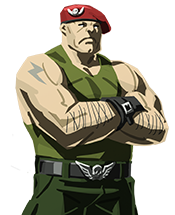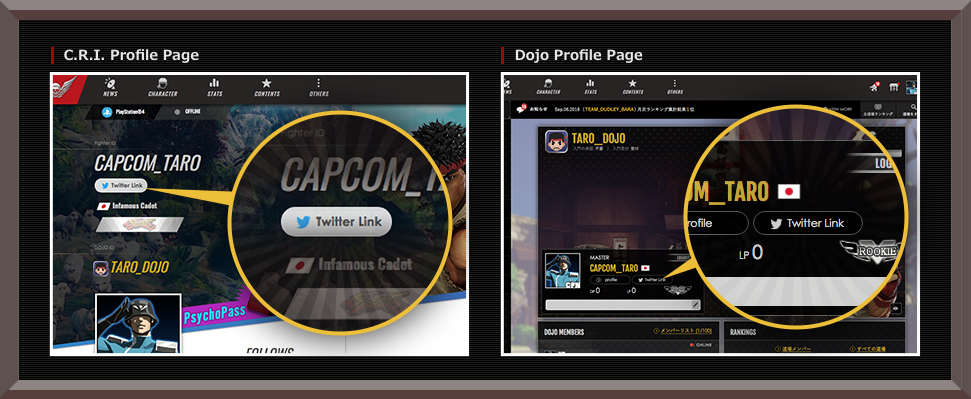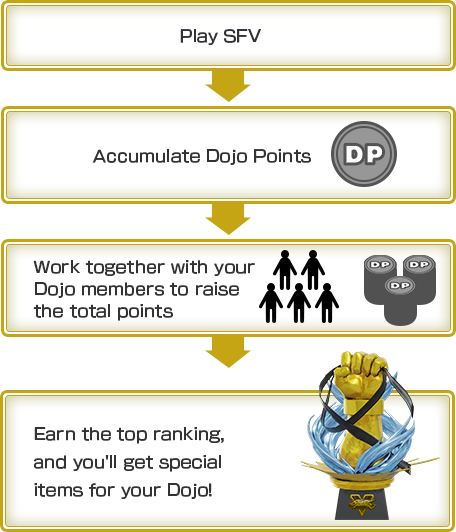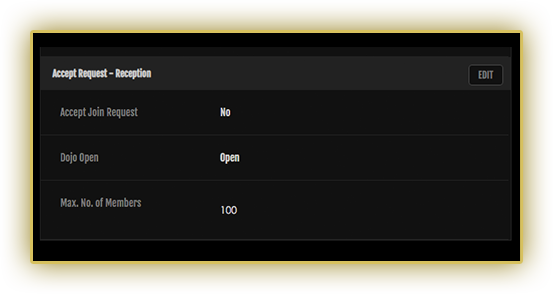Final Fight Developer's Interview
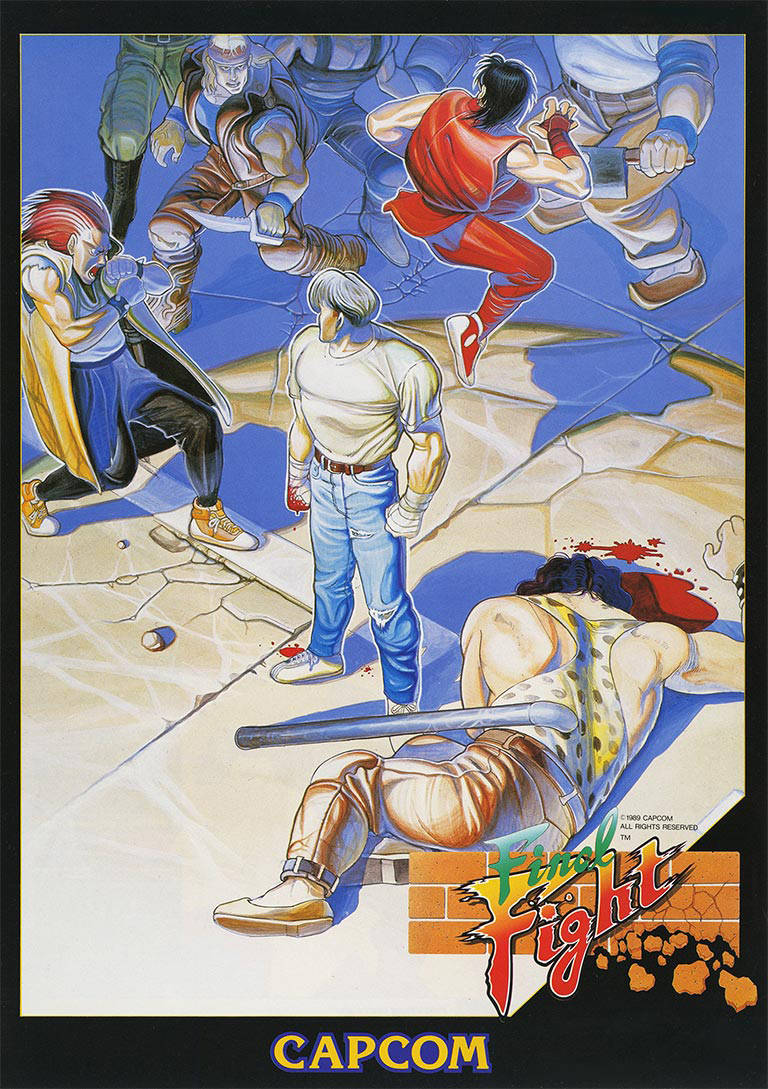
Last year we released the Capcom Beat 'Em Up Bundle, a collection of side-scrolling action games. If we're talking about side-scrolling action, Final Fight is one of the greatest hits of the genre. As you all may know, Final Fight was originally considered to be a sequel to Street Fighter, titled Street Fighter '89. Even today the two games remain linked, as many Final Fight characters have become Street Fighters.
As such, while we were gathering people for the "Street Fighter II Developer's Symposium," we also had the opportunity to interview the Final Fight developers. Similar to the SFII Symposium, we'd like to share part of that interview here!
What did Capcom become legendary for? What influenced Haggar's design? Read on to find out!
Starting Final Fight!
-- After Forgotten Words (1988), tell us about the background leading up to the development of Final Fight (December 1989).
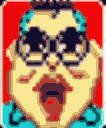
We originally had a plan to make a sequel to Street Fighter (SF1). However, at the time due to an increase in the production of the NES, there was a global shortage of 1 MB ROM chips. For SF1, we used 48 MB just for the graphics, so if we wanted to make a sequel we only had 32 MB to play with. So, we needed to buy time until the 1 MB ROMS became available again.
-- I heard that the design document for Final Fight was pretty detailed. Who made it?

That'd be me. I had a chance to go overseas together with Fujiwara (producer of Ghosts 'n Goblins), and at the time side-scrolling action games such as Double Dragon (Technōs Japan, 1987) and P.O.W.: Prisoners of War (SNK, 1988) were popular. Personally, I liked shooting games - I thought that Gradius (Konami, 1985) was the best. But the market wasn't about shooting games at the time (everyone laughs). So, I made a design document with plenty of detail and took on the development.
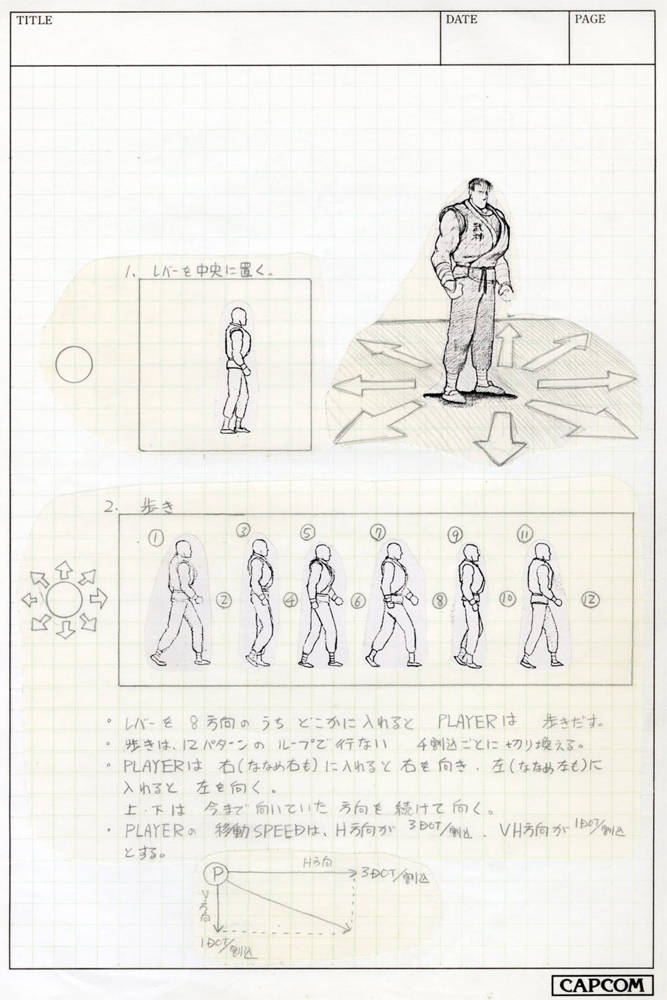

I also checked out the arcades in America when I went overseas for business. At the time, a lot of American arcades were using tokens instead of actual money. While watching the side-scrolling action games, I noticed people pumping tokens into the machine just to continue. In Japan, the most essential concept is - "How far can I get with just 1 coin?" But the American players were having fun even while losing, and seemed to enjoy continuing the game.
-- They weren't salty over losing?

Even though it's essentially "losing to the enemy," getting hit by Andore's pile-driver is more interesting, isn't it? (laughs) That's what the kind of thing they were enjoying. It was shocking to see this kind of cultural difference between Japanese people.
-- In the design document, it says that Final Fight was originally made as "Street Fighter 2," but it has a more American feel to it - were you influenced by movies such as "Streets of Fire" (directed by Walter Hill, 1984)?

That was an influence. Excluding the introduction at the planning stage, Final Fight was originally made to be a completely different game from SF1. The company president at the time (current Capcom president Kenzo Tsujimoto) often told us to use movies for inspiration, so we used movies such as "Streets of Fire" and "Hard Times" (directed by Walter Hill, 1975).

We didn't have a whole lot of time, so we had a 3-monitor set-up where we could watch other movies at the same time, as the president told us to "watch them all and learn from them."
-- That's quite the study method, isn't it?

(laughs) I remember we had a "Image Material Department" that cut and paste images from various movies so that we could make images for planning presentations.
-- Was it the influence of these movies that lead to the "NY city backstreets" feel of the game?

That it was. But later when I went to America on a business trip, the interpreter said to me "Yasuda, you don't really know what America is like. You didn't study enough."
-- (Laughs)

He told me about Israel and the state of the world, and I felt a little silly (laughs). From there I studied using books about the state of the world that the interpreter recommended.
-- That's pretty rough.
Playable Character Design
-- How did you come up with the balanced trio of a youth, the mayor, and a ninja? I get Cody being inspired from "Streets of Fire," but the mayor and the ninja are kind of from left field.

I thought that Capcom had become legendary for ninjas. We even had them in Gun.Smoke (1985), and it was my impression that it was only natural to have a ninja in a Capcom game. Apparently, Yoshiki Okamoto, the creator of Gun.Smoke, didn't want any ninjas in the game, but the president told him "ninja are necessary for the reception of the game."

I hadn't heard about that (laughs).

The president said, "Americans are all about ninjas and dinosaurs."

He certainly did say that a lot.
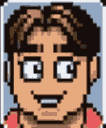
There were ninja games such as "The Ninja Warriors" (1988 Taito).

Ah, I remember that! It was really popular overseas as well.

Also, "Ninja Gaiden" (1988 Tecmo). On the continue screen the player would be facing a saw or a sumo wrestler, which we took inspiration from.
-- Ah, so that's where the stick of dynamite on the continue screen comes from...
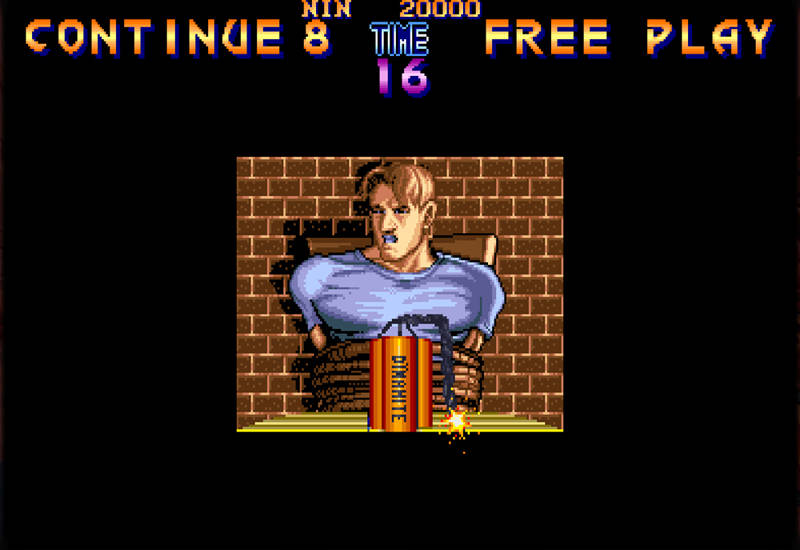

There are no sumo wrestlers in Final Fight, but we do have Wong Who, who is kind of like a sumo wrestler. It would have been weird to have a sumo wrestler in that NY city-like atmosphere, but in the movie "Breakfast at Tiffany's" (1961) there was the overly-eccentric Japanese landlord guy who lived upstairs, so we wanted a character something like that.
-- Haggar's background as the city mayor was pretty unusual, wasn't it?

I think Yasuda at the time was pretty into Les Misérables, wasn't he? That might have had an influence.

Right, Haggar is influenced by the lead of Les Misérables, Jean Valjean. In the latter half of the story, Jean Valjean becomes the major of the city.

Wasn't Haggar also influenced by "Mad Bull 34?" (written by Kazuo Koike and Illustrated by Noriyoshi Inoue, Shueisha's Young Jump, 1985)

That was also an influence, yes. From city mayor Jean Valjean, to Mad Bull 34, Haggar's a character who drew inspiration from several different sources.
-- Nishitani said in a previous interview that one way of giving characters a unique flavor was through their jump. Was there that kind of awareness for each character's movements?

The attack patterns had more or less been decided upon, so basically, we could think about how they'd react to getting hit by the player's attacks.

We came up with images, like we wanted this enemy to move in this kind of way, and we wanted fast-moving enemies for the gameplay. We wanted Poison and Roxy to do backflips when running away, etc.

I feel like you're calling out Holly Wood and how he'd come into the stage from above.
-- And he'd leave those Molotov cocktails laying around.

Right. We wanted something unexpected, so we added that in. But I was surprised when it ended up going to the palette-swap character of Holly Wood, El Gato. Well, we didn't have a whole lot of memory to work with.

Couldn't be helped. We used half the memory of "Forgotten Words" just on the graphics. Though midway through we were told we could have an increase.

Even if you say that now... lol
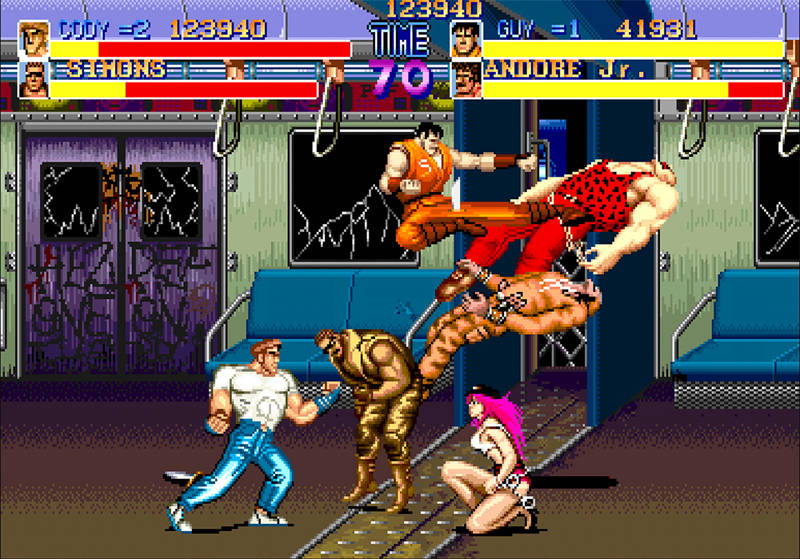
Other Matters
-- SY, how did you come to work on Final Fight?

I was originally on the Ghosts 'n Goblins team, but Fujiwara (GnG's producer) was scary, so I ran to the home consoles division.

So that's how it happened. This is my first-time hearing this. (laughs)

And from there I transferred into the arcade department (laughs). I came in while a racing game called "Red Storm" was being developed, but it later was renamed as "Mad Gear" (1989 Capcom). From there, Okamoto introduced me to Nishitani, we came to be on the same team, and in that way, I joined Final Fight and met Yasuda. That was after working on LED Storm and Capcom Baseball (1989 Capcom).
-- Nissui-san, how did you come to work on Final Fight?
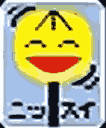
This is all 30 years ago so there may be holes in my memory, but at the time I was a new employee, and Yasuda was teaching me pixel art. From there I naturally joined the Final Fight team.
-- What stages did you work on?

The slums at the beginning, and the final stage, the garden rooftop, the last boss stage.

Who worked on the other stages?

Mikichan did the factory, Okachan did the bar, and Fukumary did the subway.

Ah, I see. Everyone was very unique. Okachan liked pretty complicated things.
-- There was a lot of detail put into the backgrounds, like the swaying hand grips on the subway.

I don't remember too well about that, but I do believe the programmers worked pretty hard on that.
-- Did you entrust them with the details?

I feel like we left a lot up to the staff. In particular during the latter half of development. I believe there's a stage in a factory where flames come out from a blast furnace - we were shown that on a screen first.
-- I see!

We were shown the stage first, and I thought "I'd like to have fire coming out here," so the flames were added in later.
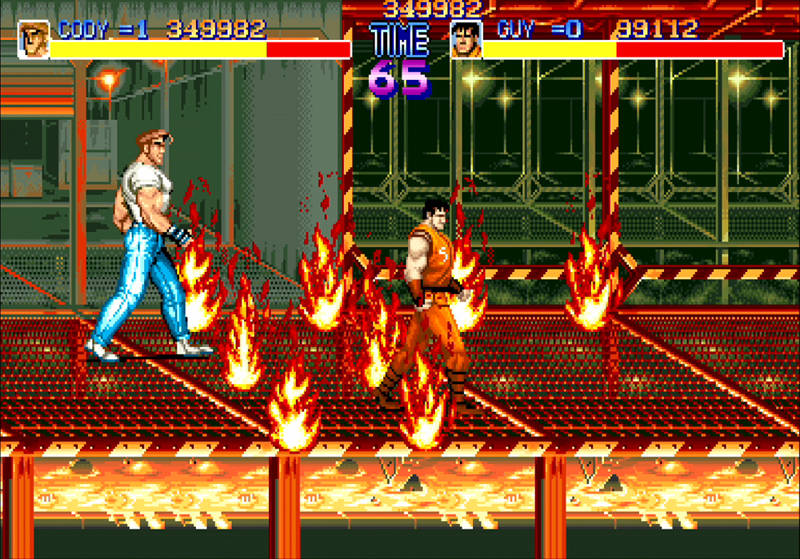
Final Staff
-- How many people worked on the development?

At the time, Forgotten Worlds didn't sell, so our number of staff members were reduced. For pixel artists we had the new employee Tissue, and one other member added later.

And Prince, who created Blanka later.

Right. Tissue was new, but he was a pretty wild guy. He said, "I want to do things a creator would do," but he was still new and we couldn't yet entrust him with things. We did let him do Cody's finishing pose, but he wasn't happy with his treatment, and he said, "if you're not going to let me be a creator then let me go home on time." (laughs)

At game companies at the time, there wasn't really any going home on time. (laughs)

For that reason, in order to give him work, and get him working on pixel art, I had to draw the originals first. So that's when I got involved in production.
-- (laughs) So, including Akiman and YS there were 4 pixel artists? How many graphic artists worked on Forgotten Worlds?

For Forgotten Worlds, we had 20 people just on graphics.

Pixel artists in Capcom development pretty much all did graphics.

It was around that time that I developed the technique of sleeping near Nishitani and Okamoto (boss)'s desk.
-- (laughs)

Hiding right under their nose, as they say.

Usually, if Okamoto caught you napping on the job he'd get pretty angry, so that took a lot of courage.
Concept of "Huge & Cool"
-- Akiman, in a previous interview you said that you'd used a production style you hadn't used before for Final Fight, could you go into some detail about that?

At the time, we had quite a bit of situations where the backgrounds and the screen were all done, but the graphics were a miss.

Right, right. Like in Ghosts 'n Goblins, we'd have one screen completely finished, only to be told "This isn't interesting at all, redo it!" That was surprising. (laughs)

"Make the weapon's graphics, then think about the weapon's attacks." That might be a great production style in its own right, but I could see that we'd be getting more memory for graphics in the future, so I wondered if there wasn't a more efficient way of doing things. So, I adopted the style of getting all of the character designs out, and then actually going into production for Final Fight. Looking at production where the character designs are made to a certain extent at the beginning, it's a method that's close to that of anime.
-- In Final Fight, the size of the characters is relatively big compared to side-scrolling action games. I heard that internally, the concept of "huge and cool" - big things are cool - was often used, so did you have that in mind, the impact of big things?
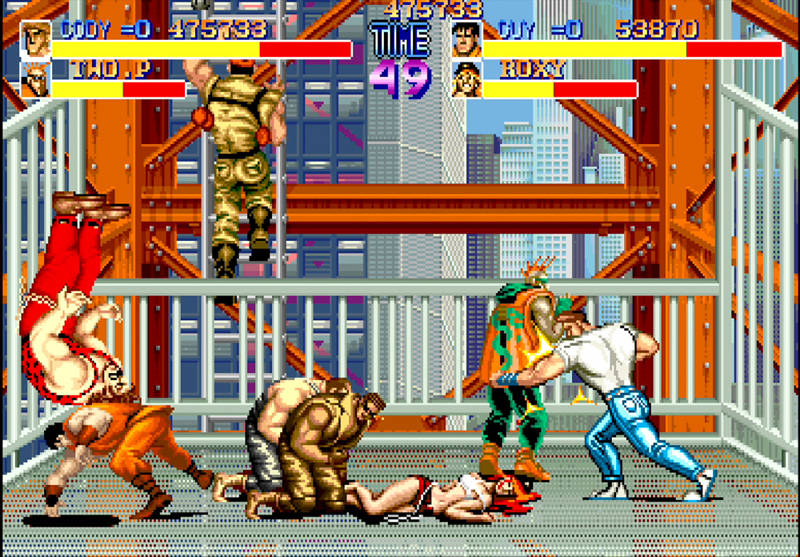

Right, we kind of wasted our efforts on Forgotten Worlds. We wanted to give the mob characters new movements on each stage, but if you really think about it, it ended up being one-shot kills. People seeing it for the first time just couldn't deal with it. That's something you shouldn't do in an arcade game (laughs). I regret that.
-- I see.

So, thinking about how it could be made more effectively, using the same capacity, I started thinking about how a character in the background could be brought into the forefront and made to be more interesting. The president had also told us "It should be surprising at a glance." I think things are different now, but at the time large characters were impactful, so we wanted to do something with that. At the time "Gladiator" (Taito, 1986) had come out, and it had really big characters, and that was very impactful.

Thinking about it now, there weren't a whole lot of patterns in Final Fight. But since the characters were big it lead to a strong impact, I think.

The player has 12 patterns when walking, and we made something work with the overall movements (laughs). We shortened the width while walking and got it within 32 pixels for the capacity.

If the width was long, that alone would eat up capacity.

When making large characters, the computer display size was quite small, so that was difficult. And at the time there weren't that many colors we could use. We had to make them with 5-7 colors for the skin, 5 colors for the top garment, and the remaining 5 colors for pants. In order to get all 16 colors in there, I had to do it quickly, going in blind (laughs).

SY's inputs were really fast. At the time the dev tools weren't suited for creating large characters. It would only display 32 x 32 pixels, so 128 x 64 pixel characters wouldn't be displayed.

Stuffing the characters was also quite difficult.
-- ...Stuffing the characters?

At the time we'd cut and paste paper, and then work to get the character within the memory limits.

In order to make the best use of the capacity we had, we wrote the ROM's capacity on a board, and cut and paste the pixel characters on the board.

That's right.

If there was space left on the board, then there was open capacity in the ROM. So, from there we started filling in the spaces, like a puzzle. One thing that happened that's kinda interesting, we saved making the ending for last, and by the time we got there we were all out of capacity. We were wondering what to do, when we found a board that had gone missing under a desk. We called it the "Miraculous Memory."

That was a relief. At the time, 2 pixel artists were on restrictions due to a fight caused by Tissue, so I hadn't slept in 2 and a half days, and when I found that board I was in a delirious state.

On that day Tissue had bandages wrapped around his fist, and Prince had a bandage wrapped around his head.
-- Ah, so it was on the same day as that infamous fight incident (laughs).

We only had 4 pixel artists to start with, and then due to the restrictions it was down to just me and SY. It was quite the struggle.
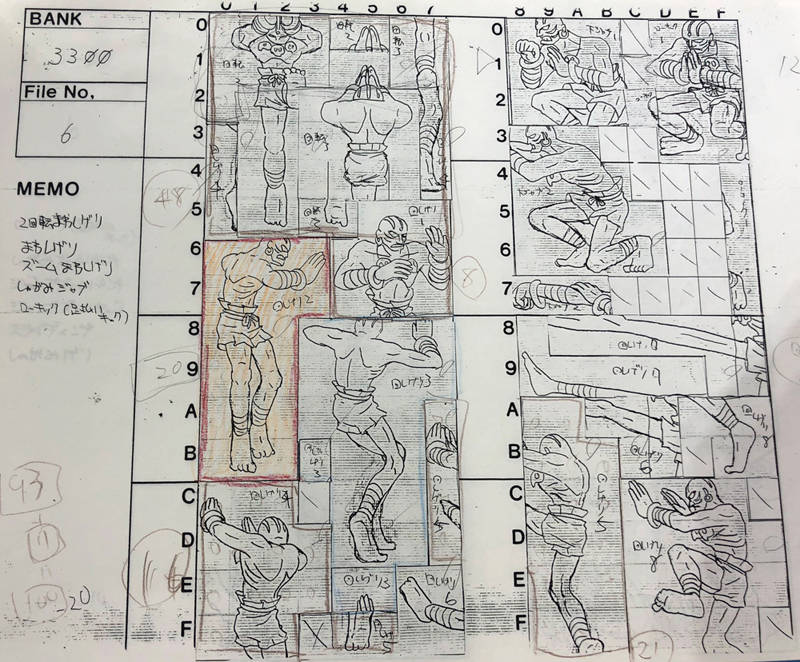
That's all for today! We hope you enjoyed this peek into the past!

■ Developer's Symposium Participant Profiles
 Akira Nishitani
Akira NishitaniHe joined Capcom as one of our first dedicated planners, and worked together with Yasuda-san on the development of Forgotten Worlds, Final Fight, and Street Fighter II. After leaving Capcom he started his own gaming company, and has released titles such as the Street Fighter EX series and Tetris: The Grand Master.
Their latest release is Fighting EX Layer.
Currently the president of Arika.
 Akiman (Akira Yasuda)
Akiman (Akira Yasuda)The lead character designer and planner for Street Fighter II. In his time at Capcom he worked as a graphic artist and planner. He also invested heavily in the growth of his successors, making significant contributions to Capcom's graphics and animation patterns. He currently works as a freelance illustrator, character and mechanical designer, and as a manga artist. He's best known by his nickname Akiman.
 SY
SYInvolved in the development of many titles, the likes of which include Ghosts 'n Goblins, Higemaru Makaijima, Street Fighter II, Eco Fighters, etc. He's currently working on creating materials for the Enterrise web page in the Pachinko & Slot Division, and researching CG.
 Nissui
NissuiContributed to creating the backgrounds in Final Fight, Captain Commando, Cyberbots: Full Metal Madness, Dungeons & Dragons, Street Fighter Alpha 3, The Legend of Zelda: Oracle of Seasons, The Legend of Zelda: The Minish Cap, Mega Man Star Force, etc. Currently, she has served as an outsource manager for titles such as Resident Evil 7 and Monster Hunter World.
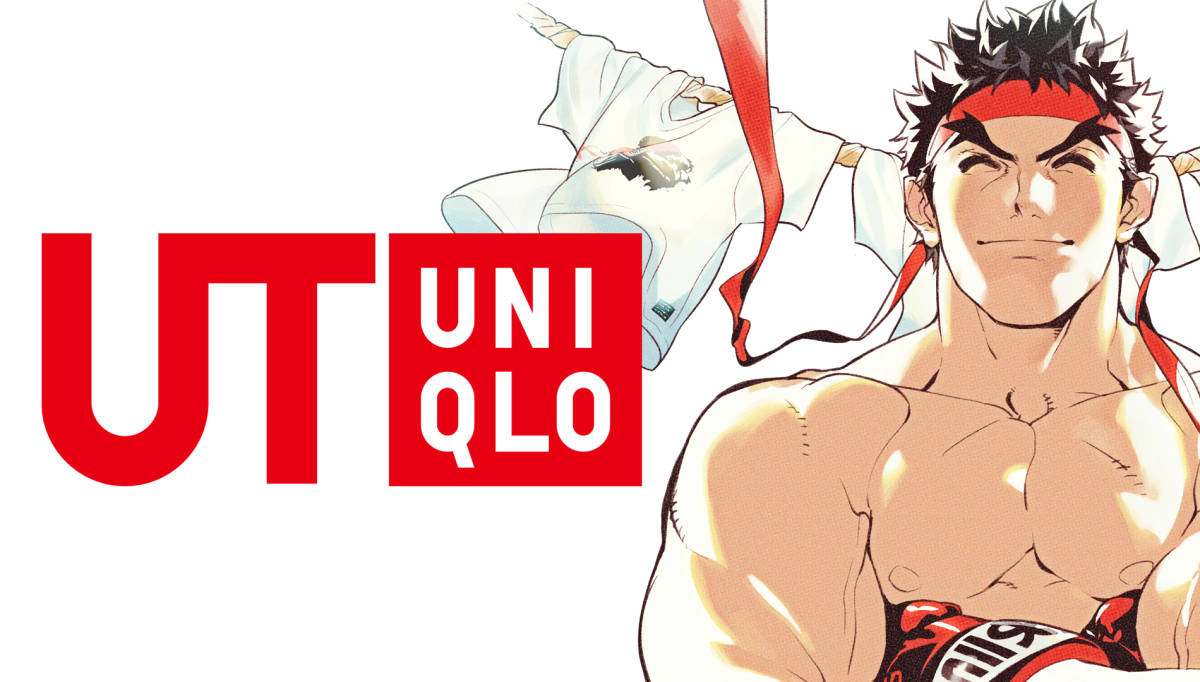
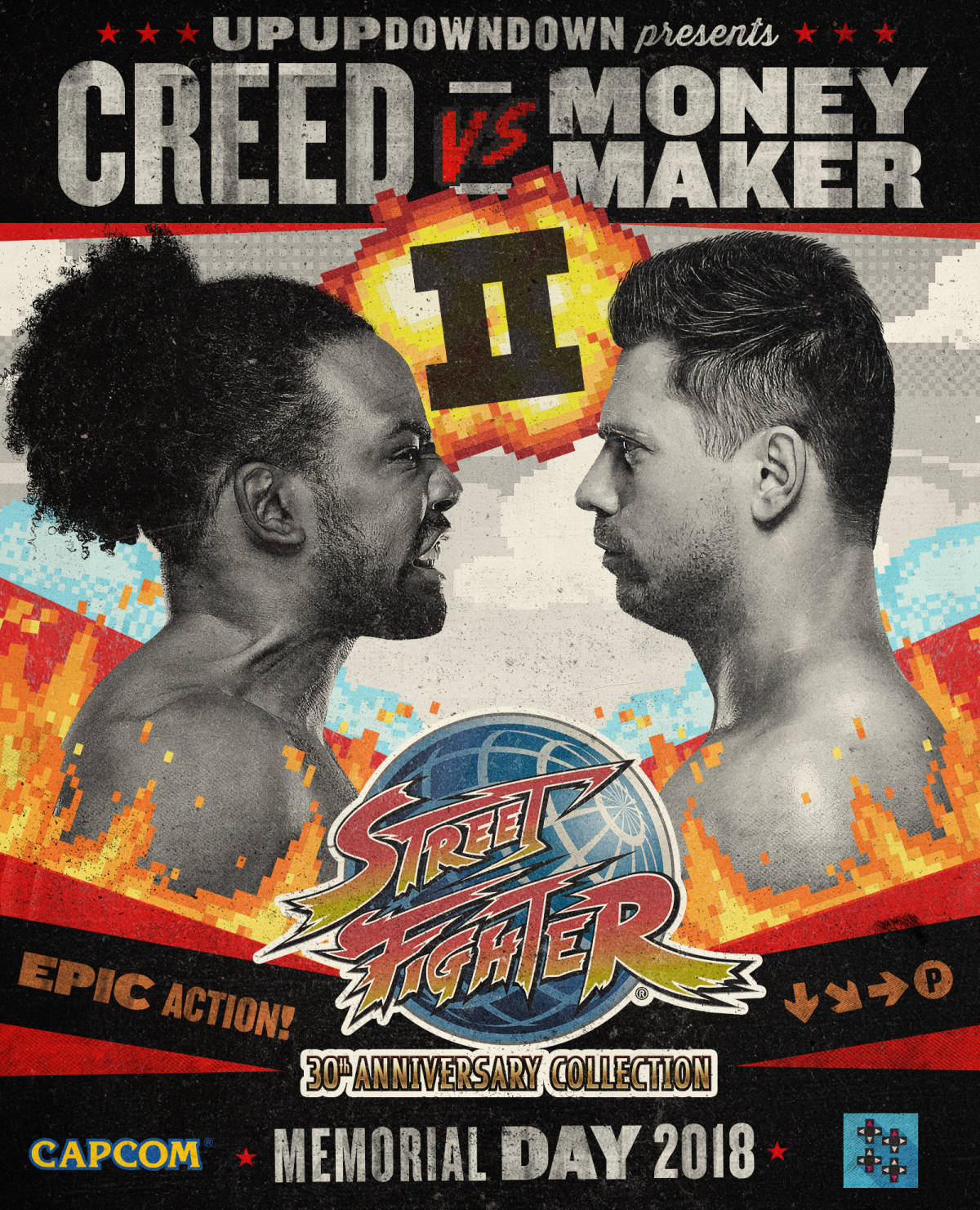
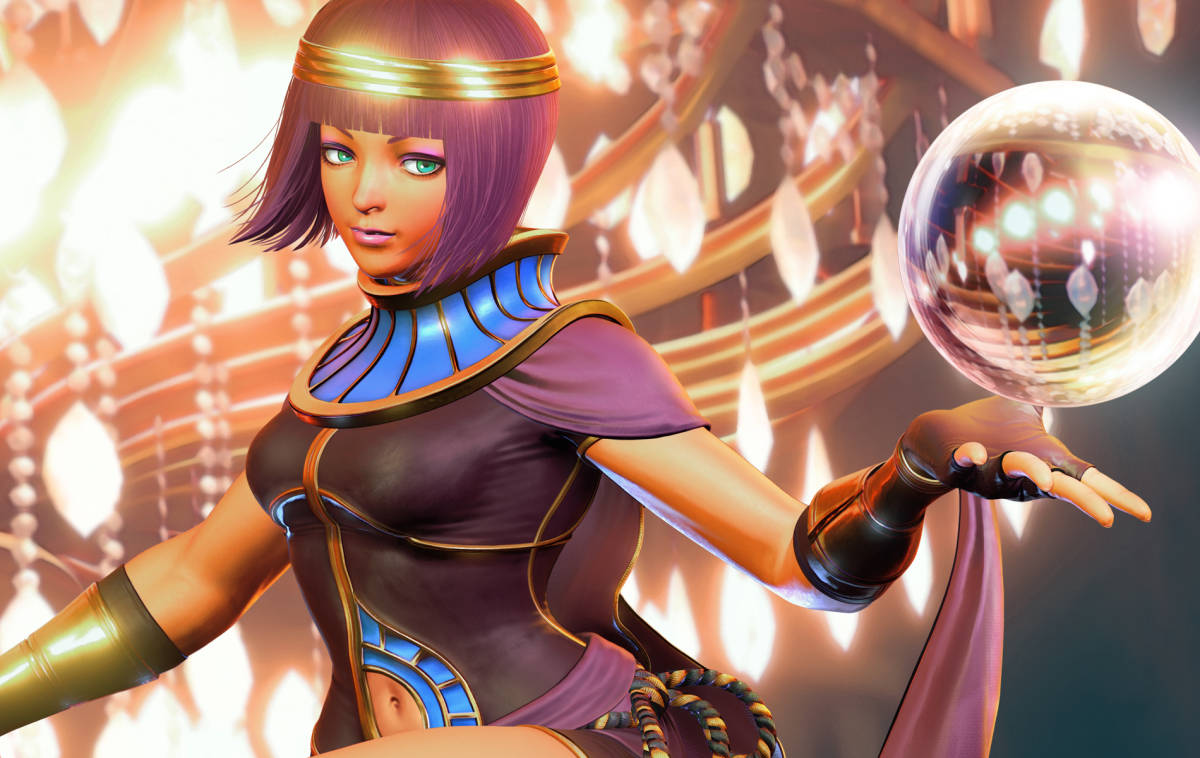

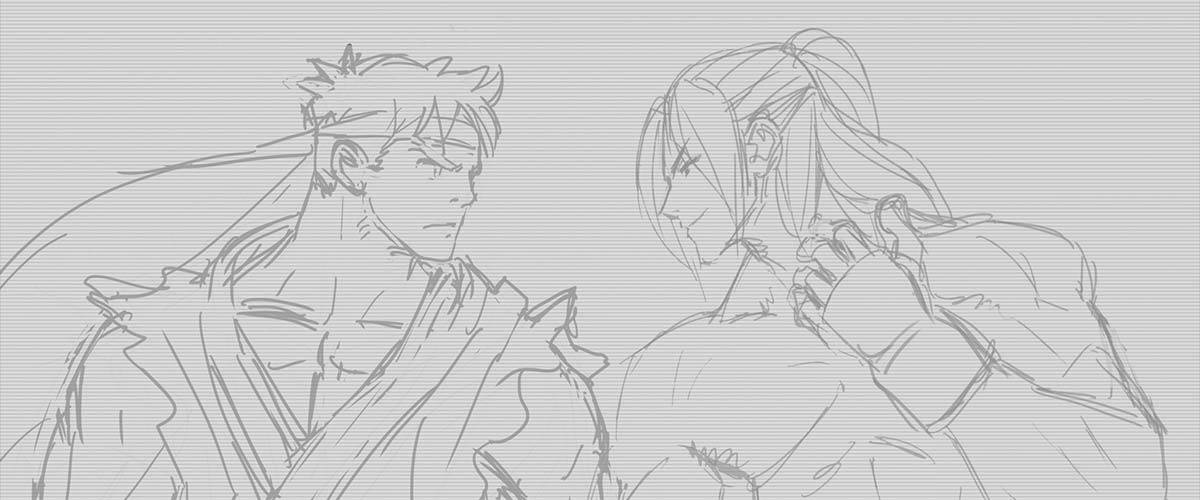

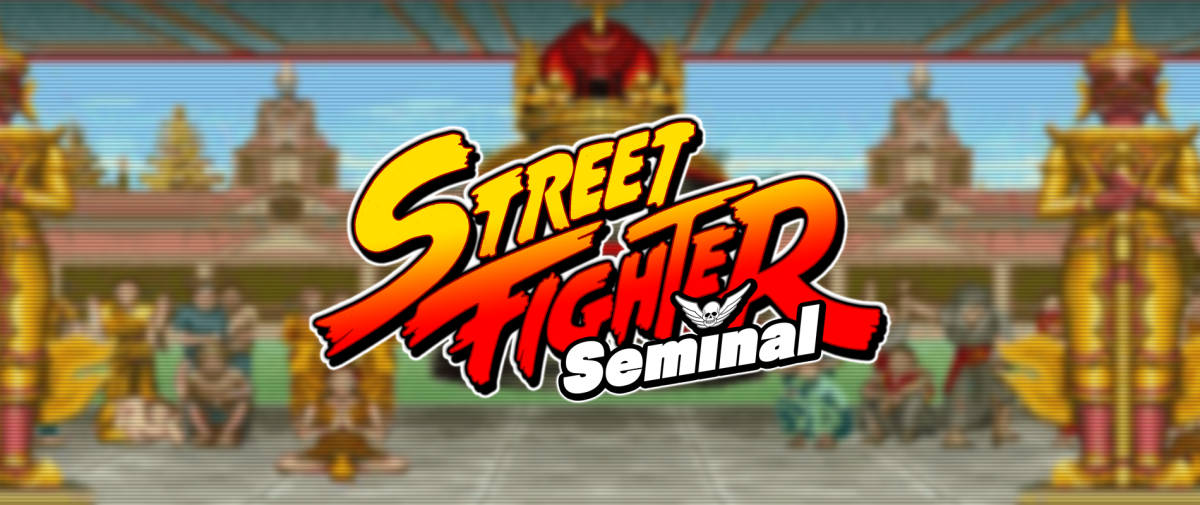


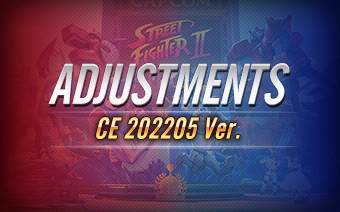
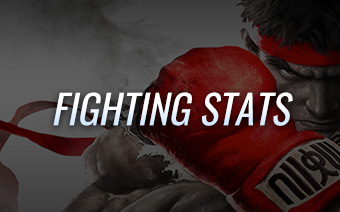
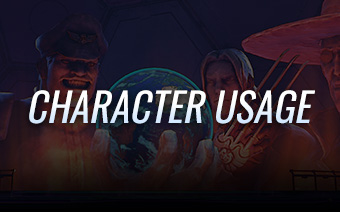
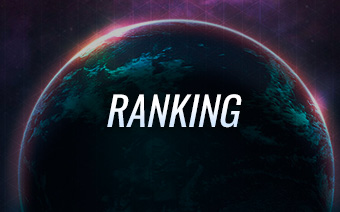
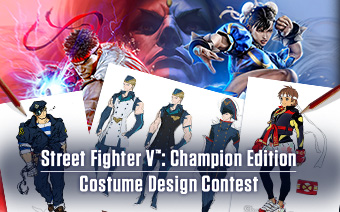
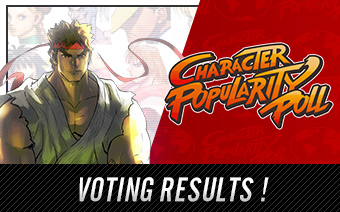






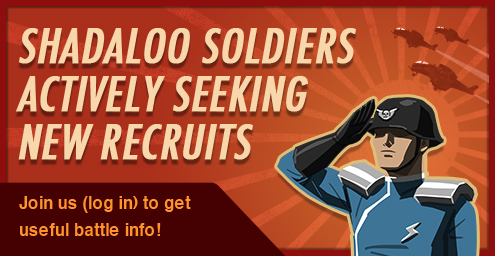



 PlayStation and
PlayStation and 
